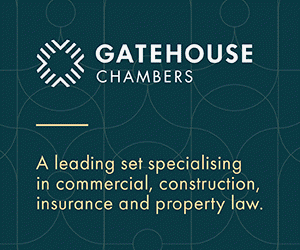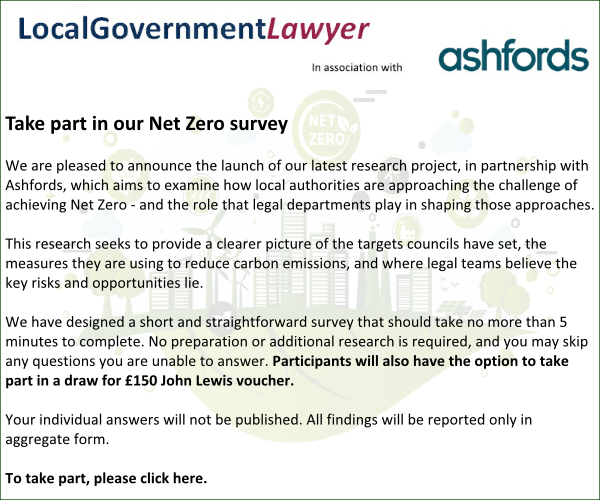Making it tax efficient
- Details
V. Charles Ward sets out some key considerations for conveyancers to ensure tax efficiency in relation to local authority property transactions.
Whilst increases in stamp duty land tax taking effect 1 April 2025 are mainly geared towards private residential purchasers, local authority purchasers may not be immune.
Save where a blanket relief can be claimed or for the very smallest transactions in terms of value, all local authority purchases will be affected by the reduction in the basic stamp duty threshold from £250,000 to £125,000. Add to that the 5% SDLT surcharge which is now added to all corporate residential purchases, including those below the new basic £125,000 threshold. Like every petrol purchase, SDLT can involve a tax-on-tax, particularly where a transaction is standard rated.
All of this is dead money which sucks resources out of tight local authority budgets, which might otherwise be applied towards regeneration. And whilst local authority conveyancers are not expected to have the expertise of a tax accountant, it is important to know enough about the calculation of property taxes to ask the right questions and to be able to query any tax-advice which appears to be wrong. It is about knowing what reliefs are available and being able to structure a complex transaction in the most tax efficient way.
Although there are many different taxes which can potentially affect property transactions, currently the three main property taxes are Stamp Duty Land Tax; Value Added Tax and Community Infrastructure Levy (where the council pays money to itself). We now look at each of these taxes in turn and examine the particular reliefs which are available to local authorities.
Stamp Duty Land Tax
The first thing to note is that different stamp duty land tax rates apply to residential and non-residential purchases. Generally, non-residential rates are more beneficial, not least because the 5% surcharge does not apply.
Although the difference between a residential and a non-residential transaction might seem obvious, that is not always the case. A purchase of a property which combines a mix of residential and non-residential use will be deemed non-residential. And although multiple dwelling relief has now been abolished, a local authority can still achieve a significant tax saving by electing to treat a single purchase of six or more dwellings as non-residential, by utilizing the exemption contained in Section 116(7) of the Finance Act 2003. The main blanket SDLT reliefs for local authorities are:
- Registered Social Landlord Relief - which is only available to those local authorities who fall within that RSL category and then only for those affordable housing purchases which are grant-funded.
- Transfer of property between companies - which may apply when a local authority is transacting with its own corporate subsidiary.
- Compulsory Purchase Relief - which applies where a local authority is purchasing property under the umbrella of a compulsory purchase order (whether confirmed or not) but only where it is intended that the property acquired will be transferred on to a development partner. It will not apply to property acquired for development which the local authority is intending to carry out itself, although other reliefs might apply. The key purpose of compulsory purchase relief is not to make a transaction tax free but to avoid the double taxation which would otherwise apply when land is purchased and then transferred away in a back-to-back transaction.
- Subsale relief - which, like CPO relief, Is intended to avoid a double tax liability in circumstances where a party contracts to purchase property and, before that transaction has completed, has transferred its contract to another party, who then steps into its shoes.
Even where blanket relief is not available for a complex transaction, it is still possible to reduce the stamp duty liability on a development transaction by structuring it in a way which ensures SDLT is only payable on the land value and not the entire development value of the transaction. Structuring a transaction in this way will generally involve separate standalone contracts for the land acquisition and another for the carrying out of the development, and with the bringing forward of completion of the land-transaction to Golden Brick, or earlier, which is the point at which a development becomes officially recognized as ‘residential ' and therefore zero rated for the purposes of VAT(see below). The key reference point when structuring a development purchase has to be SDLTM04015 of the Stamp Duty Land Tax Manual, “Scope - how much is chargeable: sale of land with associated construction contract Para 10 schedule 4 Finance Act 2003, which refers to the decision in Prudential Assurance Co Limited v IRC [1992] when Identifying the subject matter of the transaction for the purposes of stamp duty.
TOGC (Transfer as a going concern) also provides partial relief for some investment purchases, such as the landlord interest in a trading estate which is already fully let and where the local authority is stepping into the shoes of the previous landlord. Where a TOGC applies, SDLT will only be calculated on the net purchase price and not any additional VAT element. However this partial exemption can only apply when both the seller and the purchaser had waived VAT exemption before the transaction completes.
A practical issue for many local authority conveyancers, is how to ensure that tax which falls due on a transaction is paid within the required 14 days to avoid the automatic penalties which will otherwise apply. Any payment has to be correctly referenced so that it can be easily traced by HMRC and avoid follow-up query. Compliance with this 14-day deadline may not be problematic for a conveyancer who already holds funds on account. But it can be problematic for a conveyancer who is dependent on another department to ensure that payment is transmitted in a correct and timely way
Value Added Tax
A primary issue in any complex transaction is not only whether that transaction has been opted to tax but whether it should be opted to tax, to enable efficient recovery of VAT on building or other construction costs. That is something which may require specialist tax advice. Remember also that a freehold sale of commercial new build is automatically subject to VAT. For all other cases the issue is whether there has been an option to tax. The default position is that non-residential transactions are exempt from VAT. However the standard 20% will apply if it has been opted to tax. In most cases the imposition of a 20% VAT liability will be cost neutral in circumstances where the paying party is able to recover its VAT outlay as an input. Although as we have already seen, the charging of VAT on a land transaction also has implications for the calculation of SDLT (see above). The imposition of VAT on a property transaction will also be problematic for a charity or housing association which is unable to recover its VAT as an input. That is the reason why many housing associations are advised to complete their purchases at ‘golden brick’, when the transaction becomes zero rated for the purposes of VAT. Such zero rating also makes it easier for that housing Association to recover VAT on its own construction costs.
The issue of VAT on local authority transactions is particularly complex because it cannot be assumed that a local authority will be able to recover all of its VAT outlay, which in turn is dependent on whether the particular transaction can be classed as business, non-business or exempt. Official guidance on these issues is provided by VAT Notice 749: Local authorities and similar bodies, which helps local authorities and other public bodies decide which activities are business or non-business. Again, this is an issue on which specialist tax advice may be needed.
Community Infrastructure Levy (CIL)
Whilst affordable housing development by a registered social landlord will normally qualify for mandatory relief against CIL there are special rules for claiming it. The general rule is that Mandatory Social Housing Relief has to be officially claimed before the development commences and then only by an organization which is either the freeholder or which has a significant leasehold interest in the land affected. This is something which needs to be borne in mind when a local authority is working with a development partner which has yet to acquire its proprietary freehold or leasehold interest in the property but is still contractually obliged to get its development underway. In those situations it may be the local authority itself and not the development partner which has to make the formal application for that relief.
V. Charles Ward Is a Senior Property Lawyer with HB Public Law and author of Local Authority Conveyancing Law and Practice (UK).
Sponsored articles
Walker Morris supports Tower Hamlets Council in first known Remediation Contribution Order application issued by local authority
Unlocking legal talent
Contracts Lawyer
Legal Director - Government and Public Sector
Lawyer (Planning and Regulatory)
Locums
Poll









































